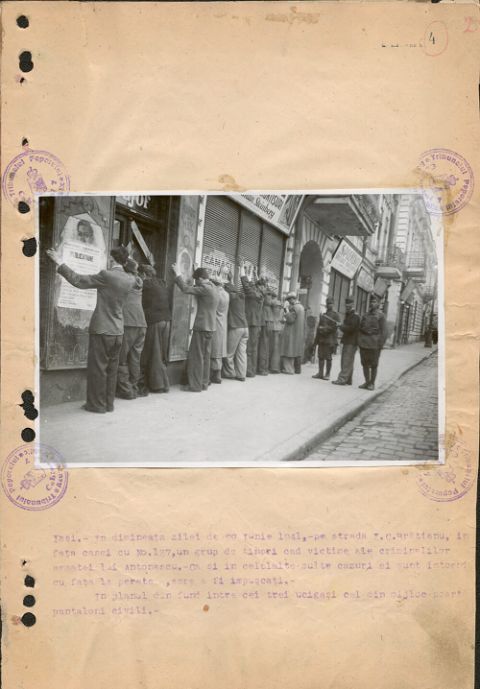Radu Jude & Adrian Cioflâncă

Radu Jude & Adrian Cioflâncă, still from The Iași Trains 1941—images and testimonies (2025). Courtesy of microFILM
Radu Jude’s award-winning films—including Aferim! (2015), Tipografic majuscul (Uppercase Print) (2020), Babardeală cu bucluc sau porno balamuc (Bad Luck Banging or Loony Porn) (2021), and Nu aștepta prea mult de la sfârșitul lumii (Do Not Expect Too Much from the End of the World) (2023)—are formally sophisticated, often provocative explorations of history, ideology, and power. Characterized by its idiosyncratic, subversive humour, Jude’s work blends archival material, essay film, and fiction in an experimental register. Together with historian Adrian Cioflâncã, Jude has created several projects in which historical documents and personal testimonies serve as points of departure for cinematic reflection. In Ieşirea trenurilor din gară (The Exit of the Trains) (2020), for example, they reconstruct the anti-Semitic pogrom of Iași in 1941, relying almost exclusively on image and text sources. Their collaboration is a prime example of an ethico-political cinema of remembrance. For their newly commissioned two-channel video work, Jude and Cioflâncã have reworked the material they researched for Amintiri de pe Frontul de Est (Memories from the Eastern Front) (2022) and Ieşirea trenurilor din gară. The project is based on photographs from an album of the Romanian Army’s 6th Roșiori Regiment taken between 1941 and 1942. The installation juxtaposes these images—which often depict the mundane daily life of the military—with sometimes gruesome excerpts from officers’ statements. It thus provides testimony of the distinct history of the Holocaust in Romania.
Commissioned by Haus der Kulturen der Welt (HKW), produced by microFILM in collaboration with HKW, 2025.
WORK IN THE EXHIBITION: The Iași Trains 1941—images and testimonies (2025), 2-channel video installation, colour, sound, 155' 24". Courtesy of microFILM